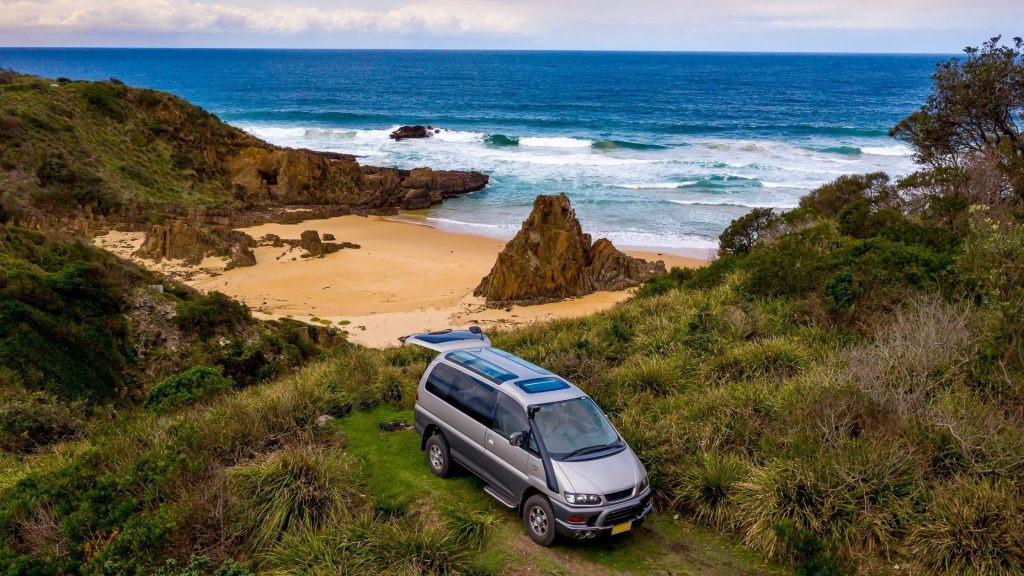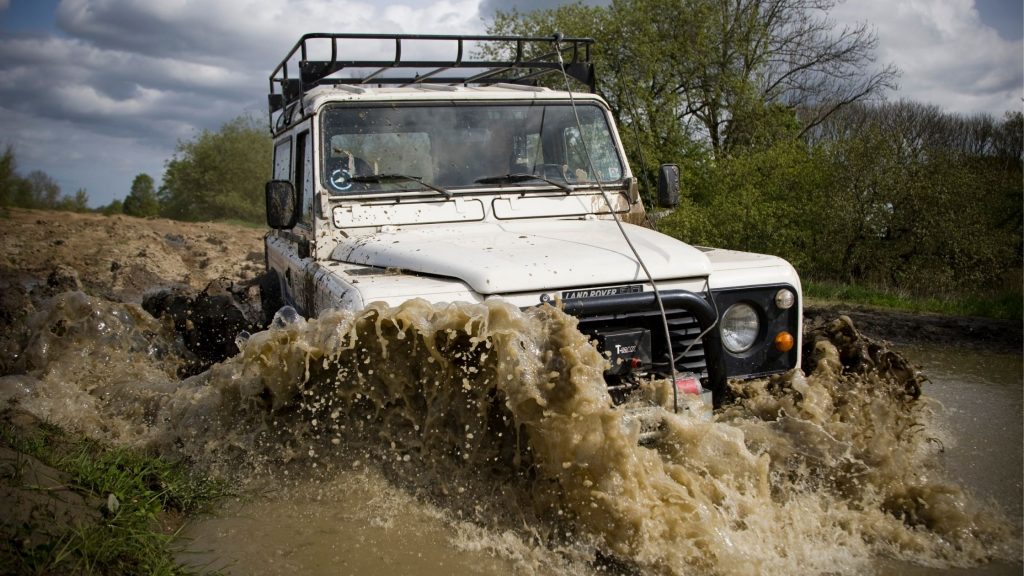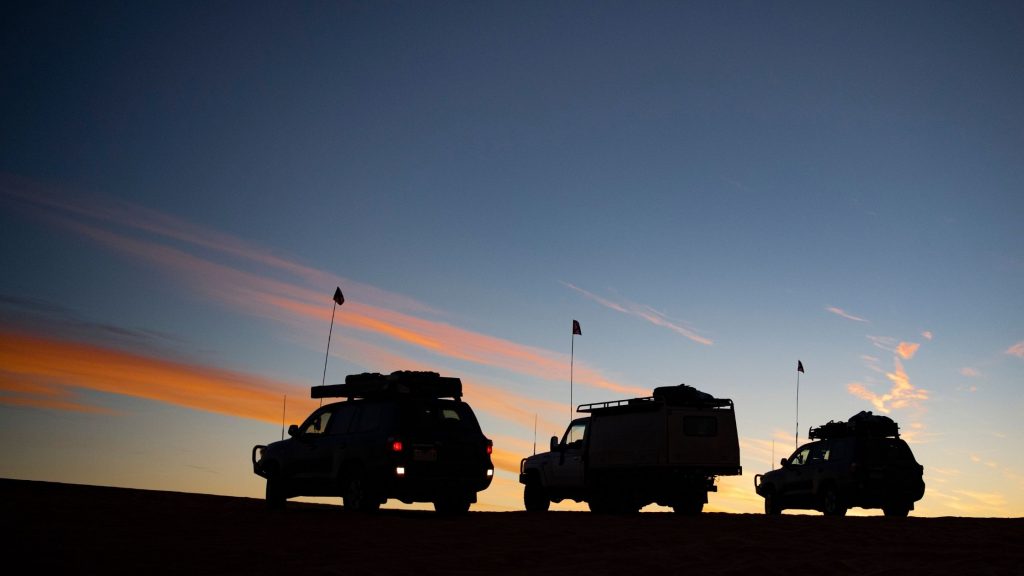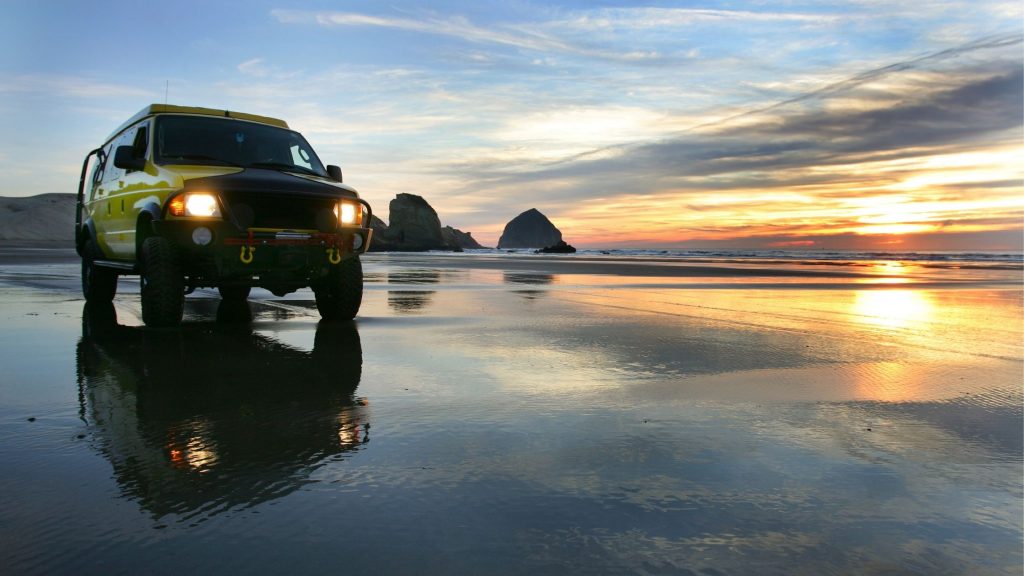When choosing your next Overlanding rig, there are many things to consider, such as engine, fuel economy, space, etc. However, one topic that might puzzle some buyers is 4×2 vs. 4×4.
Most people would assume a 4×4 is a better option, and this may be true for some overlanders, but there may be some drawbacks to having a 4×4.
In this article, we aim to help you find the best drivetrain for your Overlanding adventures.
Drivetrain
First off, let’s explain the different terms and what they mean. You may have heard before of 4×4, 4×2, AWD, or many other names for these drivetrains. Primarily there are only four types of drivetrains:
- All-wheel drive (AWD)
- Four-wheel drive (4WD/4×4)
- Front-wheel drive (FWD)
- Rear-wheel drive (RWD)
All-Wheel Drive
As the name suggests, this drivetrain sends power to all four wheels. However, there are two types of all-wheel drivetrains. These are known as full-time AWD and part-time or automatic AWD. Full-time AWD operates in 4WD continuously, whereas part-time mostly drives in 2WD, only sending power to all four wheels when extra traction is needed. This is done automatically, and it’s not possible to choose to be in 4×4 or 4×2 by the driver.
Four-Wheel Drive
Similar to the AWD system, 4WD sends power to all four wheels to increase traction when needed. Where they differ is in the strength of the drivetrain.
4WD systems are more robust and are more suited for handling rugged terrain. They generally come with a transfer case with selectable low range gears. This can usually be done electronically with a switch or manually with a shifter.
Front-Wheel Drive
The engine sends all of the power to the front wheels of the car. Front-wheel drive cars are very common today. The main benefit of front-wheel drive is better traction when driving on icy or slippery roads as opposed to RWD.
Rear-Wheel Drive
Opposite to the FWD system, the RWD sends all the power to the rear wheels only, pushing the car.
4×2 For Overlanding

Now that we know the different drivetrains, we can take a look at how they perform for Overlanding.
As we mentioned above, there are two types of 2WD systems, the RWD and the FWD. While front-wheel drive is superior to rear-wheel drive in icy conditions, it’s no match for a 4×4.
4×2 vehicles are generally a lot less expensive than 4WD vehicles. Not only is the initial purchase cost less, but the upkeep and running costs are significantly less also.
2WD cars can be quite powerful, with many sports cars sporting RWD.
4×2 vehicles have limited ability to go off-road. This is primarily down to poor traction with only two wheels getting power. If the two wheels that receive power were to find themselves on a poor traction surface, the car would become stuck as the other two wheels would be unable to assist.
One of the biggest drawbacks of 2WD vehicles is not so much the drivetrain but the overall build of the vehicle. These cars are generally built low to the ground and with weaker components.
4×4 for Overlanding

There are many types of 4WD cars on the market today. Some of them are optimal for overlanding, others not so much.
As we mentioned earlier, there are two types of 4WD drivetrains. There’s the AWD and the 4×4. While all-wheel-drive vehicles may be a better option than a two-wheel-drive vehicle for overlanding, the 4×4 reigns supreme.
Most overlanders like to get off the beaten path; they like to explore and enjoy the journey. This is why most of us pick a 4×4 as our vehicle of choice.
Its ability to take us to those hard to reach areas leaves it second to none. It can achieve this thanks to its higher ground clearance, better traction, and robust parts that are less likely to break, leaving us stranded in the middle of nowhere.
However, all these benefits come with some drawbacks such as higher price tag, higher running, and upkeep costs, and less space in some cases.
What To Choose

If your budget allows for it, nine times out of ten, I would suggest choosing a 4×4. By looking at the information above, we can see that the 4×4 is a superior vehicle in most instances. This is especially true if you are overlanding in remote areas or over difficult terrain.
Some trails, like Black Bear Pass, are just not possible with a 4×2. To attempt some of these difficult trails with a 2WD vehicle is not only a hindrance, but it can be dangerous.
With that said, a 2WD can be a suitable overlanding vehicle if you don’t want to venture too far off the beaten path. I have successfully overlanded every corner of New Zealand in a 2WD car.
Many times the cause of getting stuck is down to driver error. So, if you’re smart about your driving and don’t attempt to try anything too challenging, then a 4×2 might be the perfect vehicle.
Another example where you might choose a 2WD vehicle is if you wanted more space, most vans come in two-wheel drive and offer up ample space.
Conclusion

For those of you who want to get lost in the wilderness with little chance of rescue, choose a 4×4.
If you are concerned about your budget, and you’re happy not straying too far off the road, then a 2WD is perfectly capable.
There is also the option of AWD if you want something in between. While it’s not as capable as a 4×4 off the road or not as budget-friendly as a 4×2, it might just be the perfect middle ground.
- Tips and tricks For Setting Up Camp Like a Pro - September 11, 2023
- The Best Multi-Tools for Overlanding Adventures - August 25, 2023
- Off-Road Navigation Tips for Overlanders - August 13, 2023


